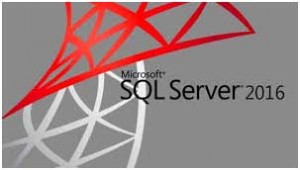Authored by Bharti Amlani
Under a recent development, Microsoft has made an announcement  of the public beta of its Azure Analysis Service. The experts are taking it as a hidden word for another big data development. It is hopefully the SQL Server 2016 DW Fast Track Reference Architecture.
of the public beta of its Azure Analysis Service. The experts are taking it as a hidden word for another big data development. It is hopefully the SQL Server 2016 DW Fast Track Reference Architecture.
It is being predicted to be quite innocuous and even downright useful. Microsoft has, in its words, “collaborated with a number of our hardware partners in a joint effort to deliver validated, preconfigured solutions that reduce the complexity and drive optimization when implementing a data warehouse based on SQL Server 2016 Enterprise Edition.”
Of course, it sounds a lot like the “validated, preconfigured solution (s)” Microsoft has clearly mentioned its one and only delivery method for Azure Stack in hybrid deployments. So, if Microsoft has plans to build a hybrid cloud future where almost all the important parts (from database to computer), will need a specific hardware, and it will about to turn off a lot of IT.
Azure Stack is the in-house component of Microsoft’s strategy to provide an improved hybrid Azure experience. If a client buys a preconfigured box courtesy of Microsoft and a hardware partner, it will get the full blown version and really amazing experience. But hold on, if you are thinking about pop out that corporate Amex card; Azure Stack is planned to be introduced in the market after the second quarter of 2017.
The reasoning is not completely absurd. Microsoft’s engineering wing advocates tight control over the hardware so that they can provide the experience that feels comfortable stamping with its logo. This fact simply establishes the demand of Azure Stack and shows Microsoft’s deep intention on availing a worthy product. It also indicates that azure hardware is a nice business model. And when Microsoft is talking about refurbish its other enterprise products, it definitely not means that its hardware-oriented strategy is not going to stop with Azure Stack.
Let’s discuss SQL 2016. The stretch database function that is the one of the most pushing feature of this, allows the data to be remotely stretched to Azure based on client required rules. The package furthermore includes the backup and full-blown migration to Azure. . It’s a toss-up whether SQL Server is being made “cloud-friendly” or “cloud-first,” given how a larger slice of Microsoft’s future — and that of nearly every other major IT vendor — is cloud-bound with each passing year.
In this situation, Microsoft may bring a reference hardware implementation of SQLServer 2016 as the prime interface for Azure, alongside other dedicated hardware. The same pitch would apply: Use our certified hardware combo to get the best possible results. Pay upfront for a proven solution and you’ll save more money in the long run.
As long it is not the sole hybrid Azure option, it could be nice one. The real detail to note isn’t whether Microsoft will push dedicated Azure hardware for various aspects of the hybrid cloud. Rather, it’s how much will be available for enterprise users who don’t go that route.









